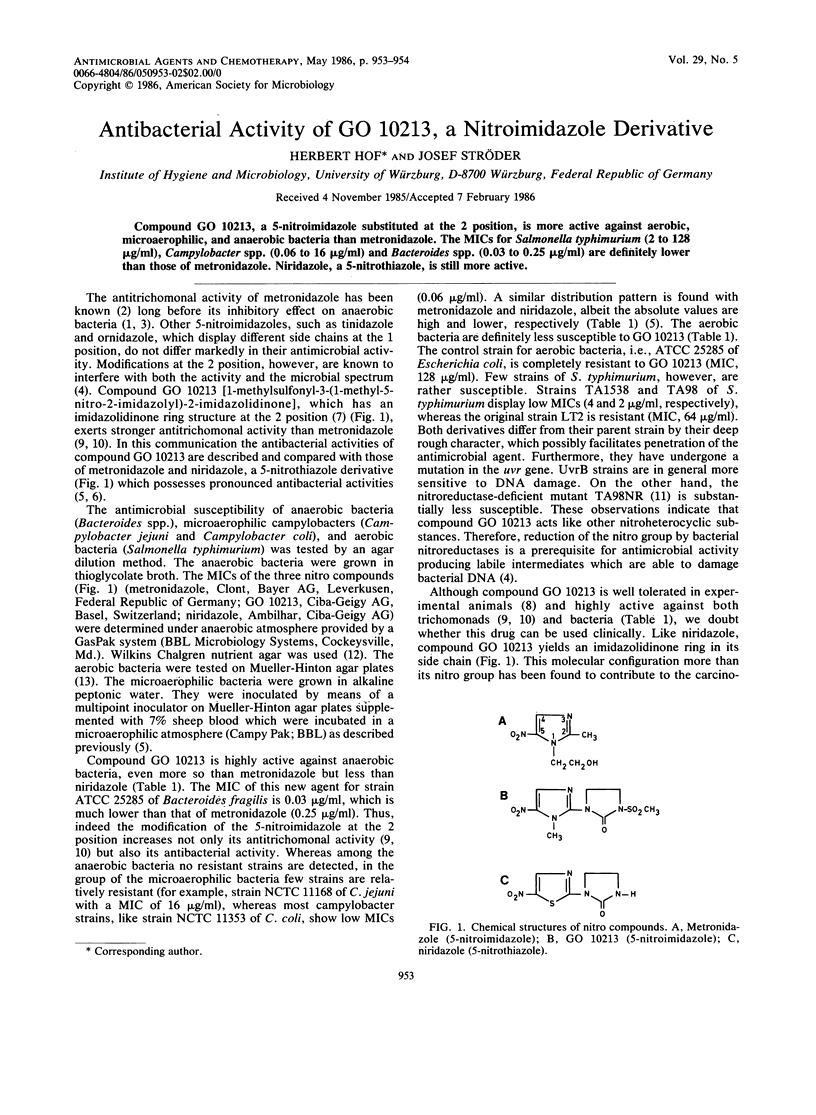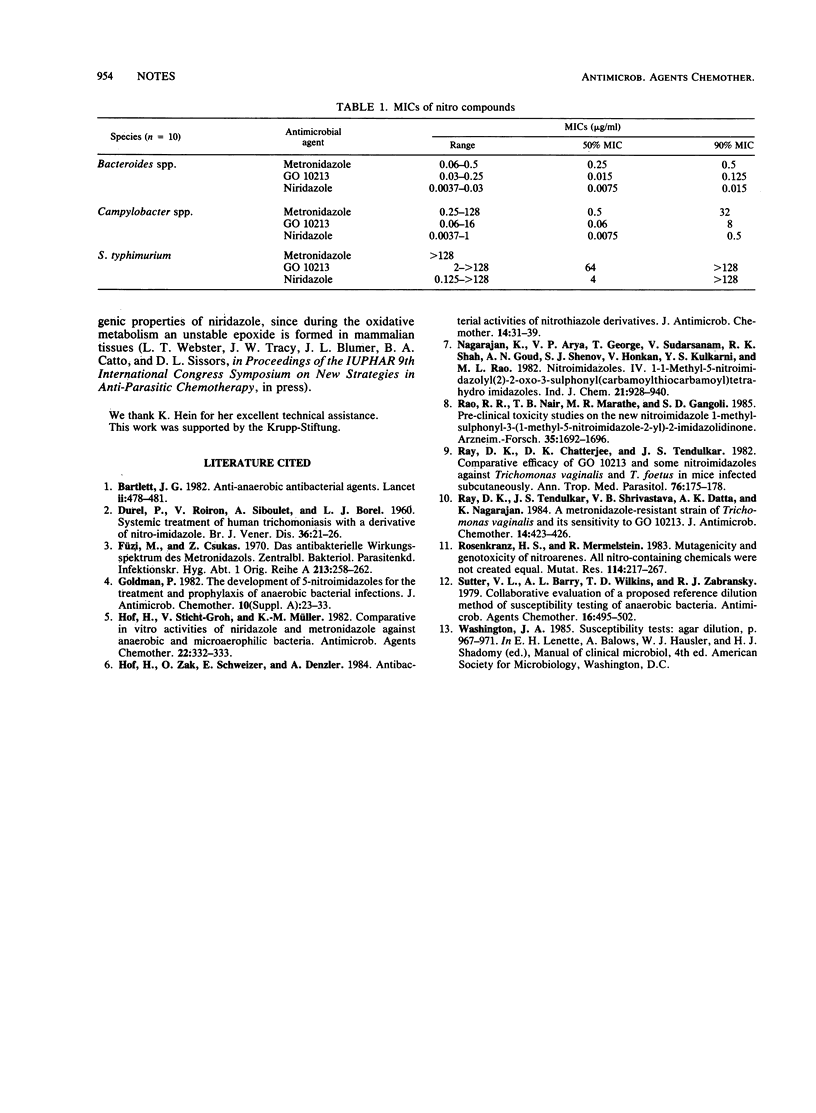Abstract
Compound GO 10213, a 5-nitroimidazole substituted at the 2 position, is more active against aerobic, microaerophilic, and anaerobic bacteria than metronidazole. The MICs for Salmonella typhimurium (2 to 128 micrograms/ml), Campylobacter spp. (0.06 to 16 micrograms/ml) and Bacteroides spp. (0.03 to 0.25 micrograms/ml) are definitely lower than those of metronidazole. Niridazole, a 5-nitrothiazole, is still more active.
Full text
PDF

Selected References
These references are in PubMed. This may not be the complete list of references from this article.
- Bartlett J. G. Anti-anaerobic antibacterial agents. Lancet. 1982 Aug 28;2(8296):478–481. doi: 10.1016/s0140-6736(82)90503-7. [DOI] [PubMed] [Google Scholar]
- DUREL P., ROIRON V., SIBOULET A., BOREL L. J. Systemic treatment of human trichomoniasis with a derivative of nitro-imidazole, 8823 RP. Br J Vener Dis. 1960 Mar;36:21–26. doi: 10.1136/sti.36.1.21. [DOI] [PMC free article] [PubMed] [Google Scholar]
- Goldman P. The development of 5-nitroimidazoles for the treatment and prophylaxis of anaerobic bacterial infections. J Antimicrob Chemother. 1982 Aug;10 (Suppl A):23–33. doi: 10.1093/jac/10.suppl_a.23. [DOI] [PubMed] [Google Scholar]
- Hof H., Sticht-Groh V., Müller K. M. Comparative in vitro activities of niridazole and metronidazole against anaerobic and microaerophilic bacteria. Antimicrob Agents Chemother. 1982 Aug;22(2):332–333. doi: 10.1128/aac.22.2.332. [DOI] [PMC free article] [PubMed] [Google Scholar]
- Hof H., Zak O., Schweizer E., Denzler A. Antibacterial activities of nitrothiazole derivatives. J Antimicrob Chemother. 1984 Jul;14(1):31–39. doi: 10.1093/jac/14.1.31. [DOI] [PubMed] [Google Scholar]
- Rao R. R., Nair T. B., Marathe M. R., Gangoli S. D. Pre-clinical toxicity studies on the new nitroimidazole 1-methylsulphonyl-3-(1-methyl-5-nitroimidazole-2-yl)-2- imidazolidinone. Arzneimittelforschung. 1985;35(11):1692–1696. [PubMed] [Google Scholar]
- Ray D. K., Chatterjee D. K., Tendulkar J. S. Comparative efficacy of Go 10213 and some nitroimidazoles against Trichomonas vaginalis and T. Foetus in mice infected subcutaneously. Ann Trop Med Parasitol. 1982 Apr;76(2):175–178. doi: 10.1080/00034983.1982.11687524. [DOI] [PubMed] [Google Scholar]
- Ray D. K., Tendulkar J. S., Shrivastava V. B., Datta A. K., Nagarajan K. A metronidazole-resistant strain of Trichomonas vaginalis and its sensitivity to Go 10213. J Antimicrob Chemother. 1984 Oct;14(4):423–426. doi: 10.1093/jac/14.4.423. [DOI] [PubMed] [Google Scholar]
- Rosenkranz H. S., Mermelstein R. Mutagenicity and genotoxicity of nitroarenes. All nitro-containing chemicals were not created equal. Mutat Res. 1983 Apr;114(3):217–267. doi: 10.1016/0165-1110(83)90034-9. [DOI] [PubMed] [Google Scholar]
- Sutter V. L., Barry A. L., Wilkins T. D., Zabransky R. J. Collaborative evaluation of a proposed reference dilution method of susceptibility testing of anaerobic bacteria. Antimicrob Agents Chemother. 1979 Oct;16(4):495–502. doi: 10.1128/aac.16.4.495. [DOI] [PMC free article] [PubMed] [Google Scholar]


